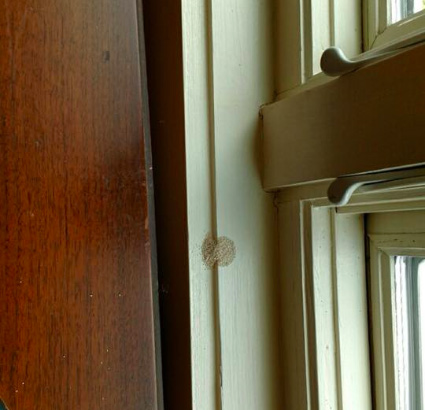 Drywood termites are one of the most problematic species of pest in Florida. They have the unique ability to live within the wood of the homes they infest and feed only on the inner layers, which means that - unlike subterranean termites and dampwood termites - there are often few external signs that termites are present. As a result, drywood termites can be present for years without noticing.
Drywood termites are one of the most problematic species of pest in Florida. They have the unique ability to live within the wood of the homes they infest and feed only on the inner layers, which means that - unlike subterranean termites and dampwood termites - there are often few external signs that termites are present. As a result, drywood termites can be present for years without noticing.
Subterranean termites are considered more damaging for a property, because they feed faster. But they also leave more signs that make it easier to spot them before the damage is too extensive, including:
- Mud tubes that are visible to those looking for them.
- Holes and wood damage that are visible early in the infestation.
The same cannot be said about drywood termites. Although many of the signs are similar, drywood termites live inside of the wood and require no mud tunnels to travel. Visible damage also tends to occur later in the infestation, which means that catching them before they have damaged your home can be problematic.
Other than discovering them within the wood, it can be hard for the average homeowner to notice that they have a drywood termite infestation until damage has already been done.
Early Warning Signs of Drywood Termites
It's never too early to eliminate an infestation, so if you suspect you have any termites, give us a call today. Even if they have already damaged your property, the sooner they are treated the less damage they'll be able to do.
Still, there are a few ways to stop drywood termites before they have caused irreparable damage to your home or building. It requires you to pay very close attention to your property, and to order an inspection if you even suspect a problem:
- Discarded Wings w/Wingless Dead Termites - All termites swarm, including drywood termites. They also all discard their wings, which is a sign of termites in general but not necessarily of drywood. But drywood termites shed their wings more quickly, and so if you see a dead swarming termite it is less likely to have its wings than its subterranean cousins.
- Termite Droppings - Though the obvious presence of drywood termite droppings, called "Frass," tends to occur after an invasion has grown, it is possible to see some droppings during the early stages of an infestation. Drywood termite droppings are almost completely dry pellets of wood that look more like wood dust than insect feces. If you see any unexplained sawdust-like pellets, it may be a good idea to call for a termite inspection.
- Hollow Wood - Unfortunately, most homeowners notice that the wood has hollowed out only after the colony has grown. But if you knock on the wood around your home and it sounds more hollow than usual, you may want to consider an inspection.
Other signs of drywood termites, including clicking in the walls, wood warping, and the presence of wood damage tend to occur after an infestation has grown considerably. But the above signs can be caught earlier, before the termites have had a chance to feed substantially on your property.
Eliminate Drywood Termites by Calling Bug-Man Pest Control Today
Drywood termites infestations are often difficult to identify without experience, because the damage they do is often hidden and rarely seen outside of the home. But there are still some ways to spot them early, with visible damage, swarmers, and fecal pellets giving them away.
Still, no matter where they are in their infestation, the sooner you treat it the sooner your home will be termite free. Bug Man Pest Control in Florida is here to help, with termite fumigation that is both effective and competitive for the region. Give us a call today at 904-289-7171 to get started.

